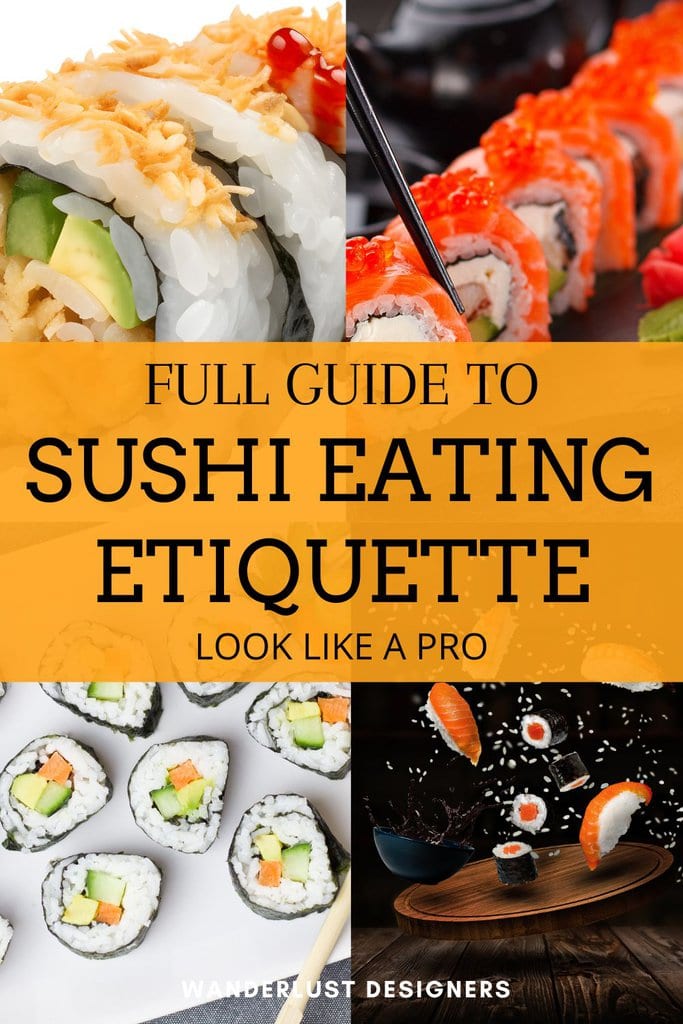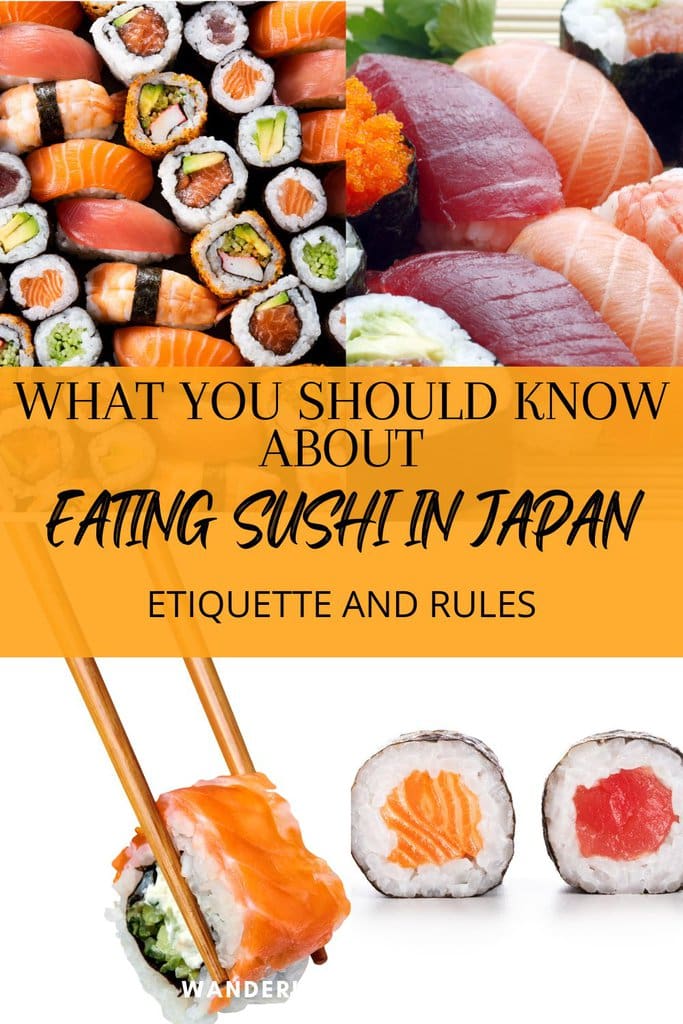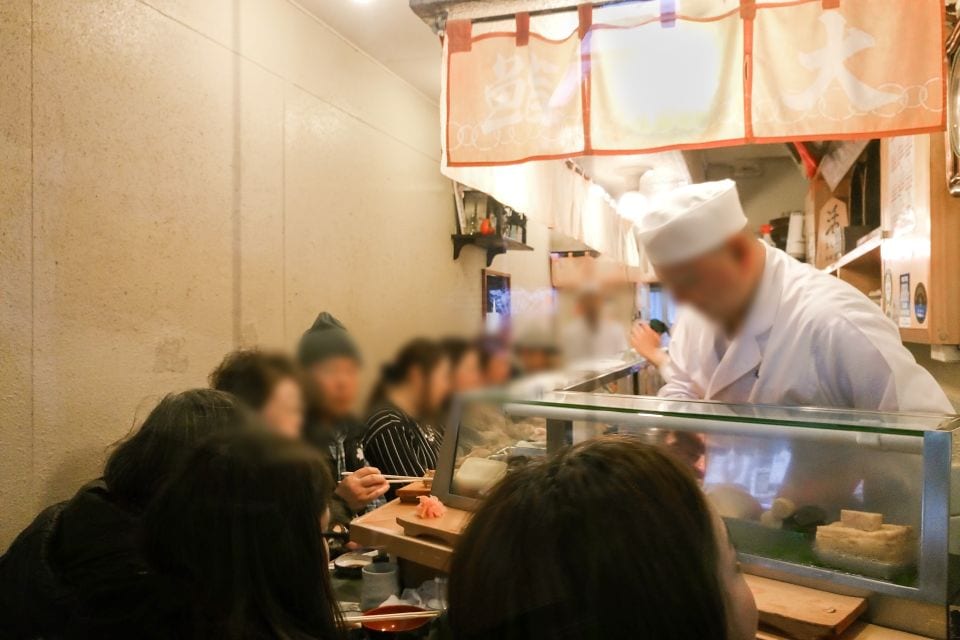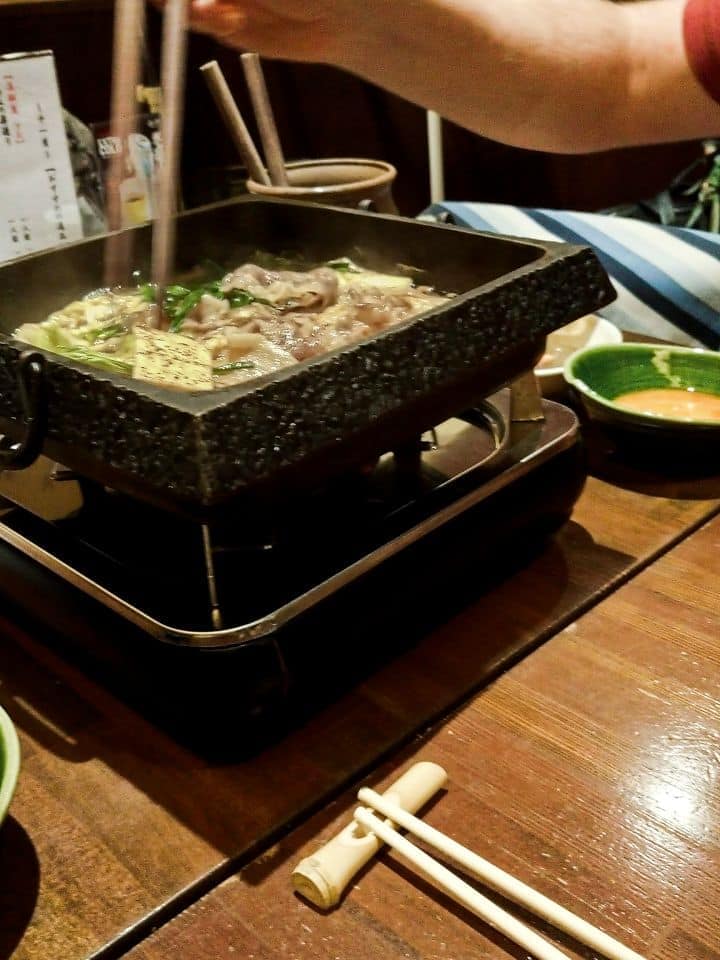Sushi eating etiquette: 9 rules for eating sushi correctly
Sushi is probably one of the most popular Japanese food items in the world. And as with other food, sushi has adapted to many different countries, and so is eating it. But that doesn’t change the fact that if you want to enjoy sushi in Japan, you have to follow sushi eating etiquette.
So here you have some of the rules how to eat sushi in Japan, which you shouldn’t break not to offend the Japanese.
Like, don’t use too much soy sauce or wasabi – in a proper sushi restaurant, of course. Or, if you can’t use chopsticks properly, use your hands! Use ginger to clean your palate before different meals, and if you’re unsure of what to try, omakase is your saviour.
Read on to learn more!
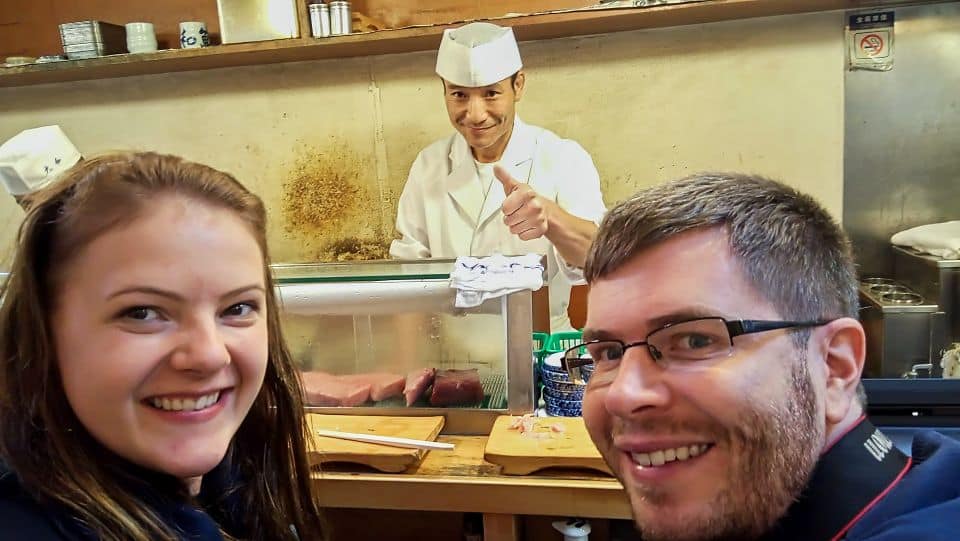
Sushi eating etiquette
And let’s dive into the sushi etiquette! These are, in my opinion, the most important rules if you want to eat sushi correctly.
#1 Know the difference between sushi and sashimi
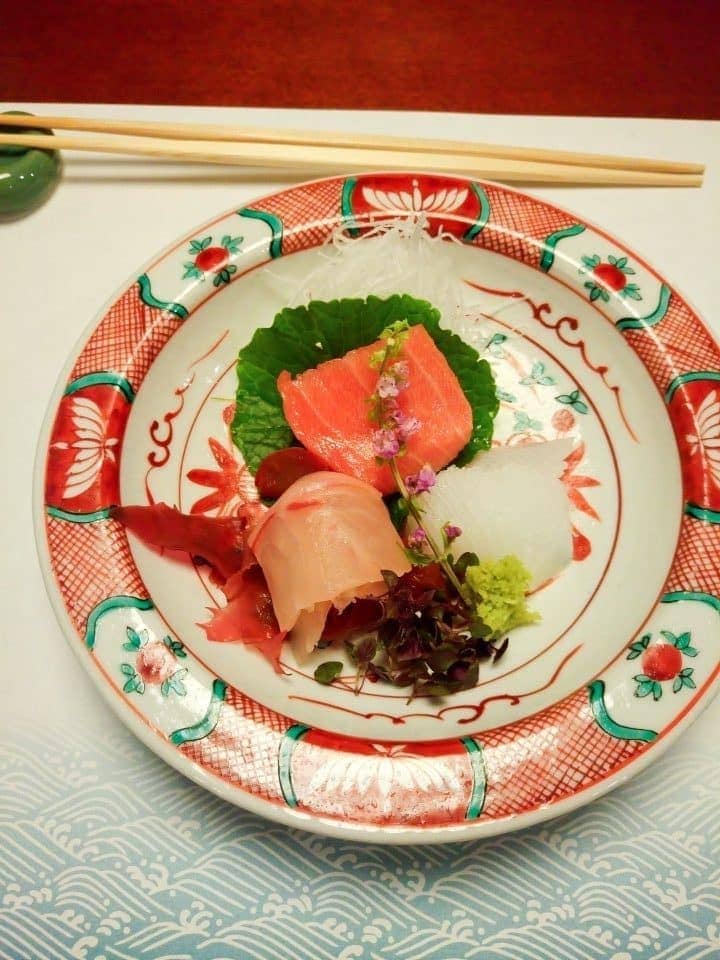
Sashimi is slices of raw meat (most typically fish, but it can be red meat as well)
Sushi is vinegar, salt, and sugar seasoned sushi rice served with other ingredients, which is commonly raw fish, but it doesn’t have to be, and some veggies.
There are different types of sushi. The most popular are maki (seaweed sheet wrapped around rice and fillings), uramaki (inside-out maki – seaweed in the middle, rice and fillings on the outside), and nigiri (one ingredient served on top of rice).
#2 Do not add wasabi to your sushi!
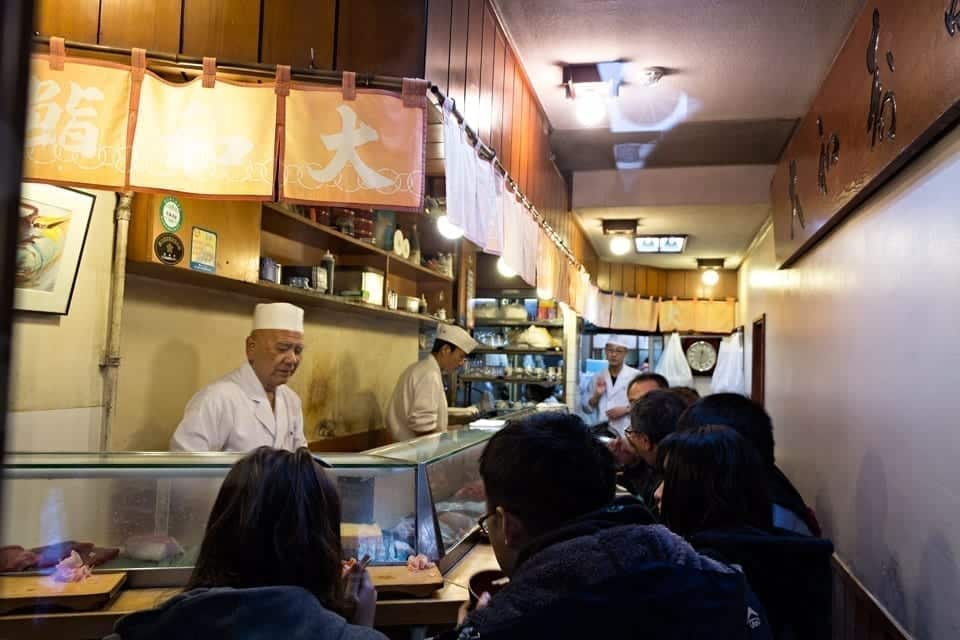
The sushi that require wasabi will already be seasoned with it. If you try to add it to the soy sauce or directly on the sushi, you’ll offend the chef.
We actually kind of got scolded by a sushi chef in a sushi restaurant when we were about to add wasabi to our soy sauce. He explained that there’s already wasabi on the sushi, though.
#3 Do not cut the sushi in half
Or rather don’t use your chopstick to push it in half. This way you’ll destroy both the visual presentation and the taste.
Sushi eating etiquette requires you to put the whole sushi in your mouth. If the peace is big, you can cover your mouth with your hand. But if the food is falling out of your mouth (happens to the best of us!), do not catch it with your hand! It’s called “tezara” or “hand plate” and is one of the Japanese food taboos, so considered quite rude.
#4 Do not stab your chopstick in the sushi
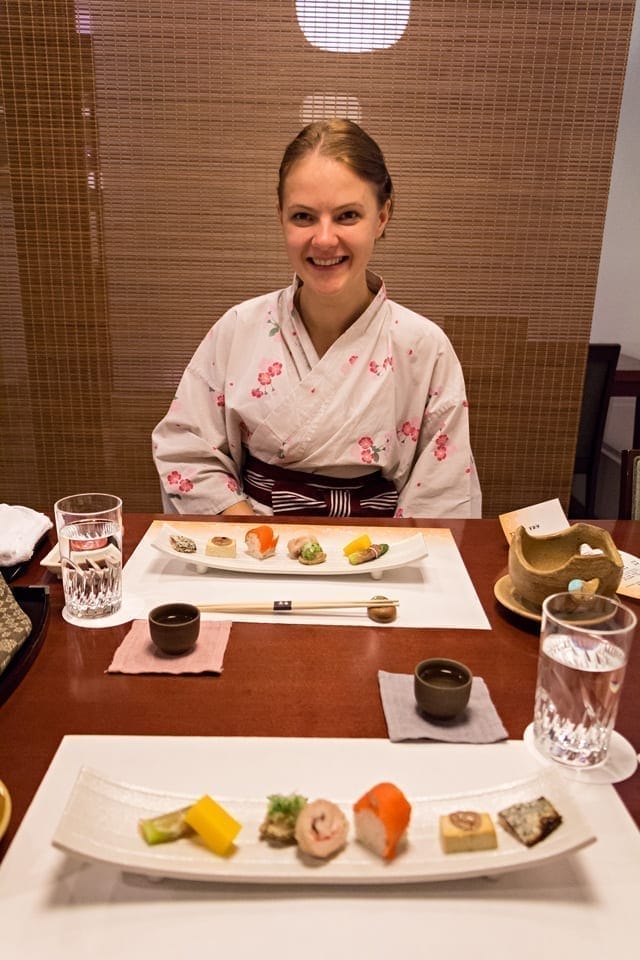
As I mentioned in the chopstick etiquette part of this article, do not ever stab your food, as it’s rude and definitely one of the food taboos in Japan. There are other chopstick rules, so be sure to read up on them, too.
You have to put the chopsticks around your piece of sushi and get them in your mouth that way – and in one bite! Don’t worry, Japanese chefs are professionals – I’m very sure that the sushi will not fall apart! Just make sure not to soak it in soy sauce!
#5 Use your fingers if you must
In the beginning, sushi was considered to be a fast-food dish, so it was eaten with your fingers. Now, however, it’s more popular to eat it with chopsticks.
But still, sushi eating etiquette allows you to use your fingers if you’re unsure of your chopstick skills.
If you’re putting your chopsticks down, put them side by side on the chopstick rest (hashioki in Japanese), on the wrapper they came in, or on a tray.
#6 Do not put too much soy sauce in the dish
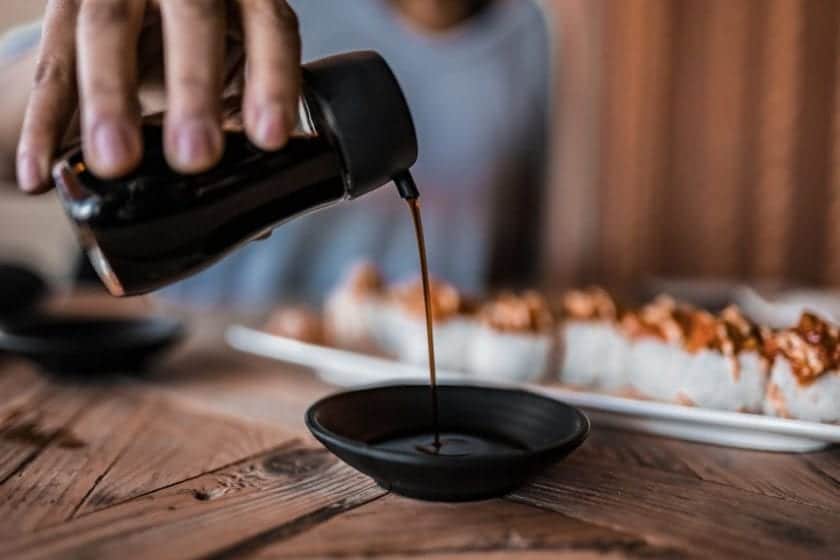
Put only a minimal amount of soy sauce in your dish. Overserving the soy sauce is considered bad manners, as you’re wasting food this way.
On the other hand, it’s customary to leave a tiny bit of soy sauce in your dish when you’re finished.
#7 Do not soak the rice in soy sauce – sushi eating etiquette says to dip the fish
If you put the rice part of sushi in the soy sauce, it will soak the rice and make it taste too salty.
Just use your middle finger and thumb (if eating sushi with your hands) to hold the rice and your index finger to hold the fish. For eating, turn your nigiri around and dip just a corner of your fish in the soy sauce.
#8 Reset your taste buds with ginger
Each piece of sushi is made to have the perfect taste combinations so, if you still have the previous taste lingering around your mouth, it will disturb the next one. To reset the taste buds, eat a little bit of pickled ginger before trying out the next sushi!
Pickled ginger is called “gari” in Japanese and you should nibble on a piece of it before having different foods.
#9 If you don’t know which sushi to order, try omakase

Omakase means a chef’s choice – and sometimes it’s the best way to enjoy sushi, or even the only way in some sushi restaurants. We had omakase in one of the most popular sushi bars in Tokyo at the time, and let me tell you, we tried things we otherwise wouldn’t have.
For example, a sea urchin nigiri. I can’t tell you that I exactly enjoyed the sea urchin, but all the other sushi, and the experience altogether, was incredible. The sushi chefs are really knowledgeable and are happy to share their experiences.
Another time we had a kind of omakase was in a ryokan when we were visiting Hakone. That one didn’t have such interesting choices, though.
Definitely choose omakase if you’re eating sushi for the first time – what better way to find out which ones you actually like?
In conclusion about sushi eating etiquette
There are quite a few Japanese dining etiquette rules, and sushi is not an exception. Whether you have a quick bite of supermarket sushi in Kyoto or have it as part of a kaiseki dinner in an upper-class ryokan in Hakone, make sure to follow the sushi eating etiquette!
If you have any questions or comments, I’m happy to talk to you! Leave a message!
Found this helpful? Save it on Pinterest!
